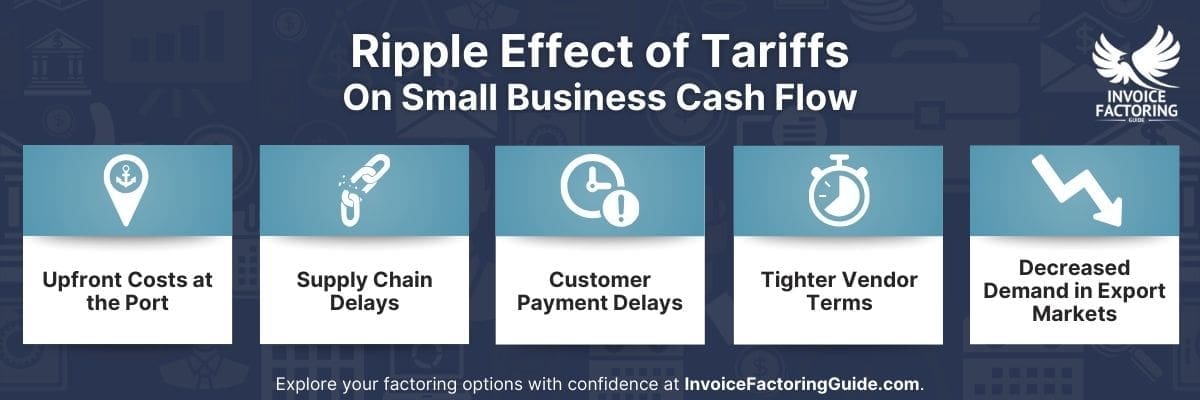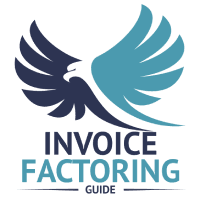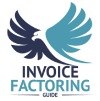
If your margins are tighter, timelines are slipping, and capital feels stuck, you’re not alone. Tariffs can throw off an entire cash flow cycle, and businesses across the nation are feeling the squeeze. If you’re trying to offset the impact of tariffs, invoice factoring can help.
Tariffs Hit Fast, and Small Business Cash Flow Pays the Price
Tariffs don’t leave much room to plan ahead. One policy change can shift your costs overnight, and the ripple effects reach your cash flow just as quickly. While the specific challenges vary depending on how your business operates, the financial strain often starts with timing and builds from there.
- Upfront Costs at the Port: Tariffs are often due before goods are released, requiring payment long before you generate revenue from those products.
- Supply Chain Delays: Tariffs can slow down customs clearance or force changes in sourcing, delaying production schedules and fulfillment.
- Customer Payment Delays: Buyers downstream may be struggling with the same tariff-related costs or disruptions, which can lead to longer payment terms or missed due dates.
- Tighter Vendor Terms: Suppliers under pressure may shorten their terms or demand earlier payment, reducing your financial flexibility.
- Decreased Demand in Export Markets: When foreign governments impose retaliatory tariffs, it can cause international buyers to cut orders, delay shipments, or ask for discounts.

Whether You Import or Export, Tariffs Can Tie Up Your Capital
Tariffs impact businesses differently depending on where they sit in the supply chain, but the end result is often the same: less accessible cash.
Importing Goods
When your business brings in raw materials, parts, or finished products, tariffs are typically due up front. These costs hit before your inventory has even cleared customs, leaving you to cover large expenses before generating any revenue. If your customer terms are 30, 60, or 90 days, you’re stuck holding that burden for weeks or months.
Exporting Products
Reciprocal tariffs imposed by other countries can drive up the price of your goods in foreign markets, making them less competitive. That often results in slower sales cycles, delayed payments, or even order cancellations. Cash you expected to have on hand stays tied up in inventory or unpaid invoices.
Businesses Caught in Between
Many companies sit on both sides, importing materials, assembling products, and then exporting them abroad. These import/export businesses take the full hit, absorbing tariff costs on both ends while trying to keep production running and customer relationships intact.
Revenue is Locked in, But Working Capital Remains Out of Reach
On paper, your business might look stable. Orders are flowing, invoices are issued, and revenue is booked. But if that money isn’t landing in your account quickly enough to cover operating costs, you’re dealing with a working capital gap, and tariffs can make that gap wider.
Delayed Customer Payments
Many buyers are pushing out payment terms as they manage their own cash flow challenges. Even reliable clients may move from 30 to 60 days, or beyond, leaving you waiting longer for the same revenue.
Capital Tied Up in Inventory
If you’ve stocked up to avoid tariff hikes or port delays, you may have more money sitting in warehouses than you’re used to. That inventory doesn’t translate into cash until it’s sold and paid for.
Rising Expenses Across the Board
Tariffs often show up alongside other cost increases in freight, insurance, labor, and vendor rates. Even if your revenue is steady, those added expenses can outpace your available cash.
No Room to Absorb the Unexpected
When too much of your money is tied up in receivables, it becomes harder to react to new opportunities or cover surprise costs. Hiring pauses. Equipment upgrades wait. Growth slows down.
Factoring Unlocks the Cash That’s Already in Your Business
When you’re facing a cash flow gap caused by tariffs, the money to solve it might already be sitting on your books. Outstanding invoices represent earned revenue, just not yet available to use. Factoring allows you to access that money sooner by selling those receivables at a discount to a factoring company.
You Stay in Control of What You Factor
You don’t have to factor every invoice. You can choose specific accounts or customers depending on your needs, your margins, or your timelines.
The Process Moves Quickly
Once set up, many businesses receive funding within one to two business days. That timing makes a difference when you’re juggling duties, shipping schedules, or vendor payments.
Customer Relationships Stay Intact
In most cases, your customers still pay on the same terms. The only difference is that they send payment to the factor instead of your business. Good partners work behind the scenes and preserve your relationships.
Funds Scale with Sales
As your volume grows, so does your access to capital. The more invoices you generate, the more flexibility you have to meet obligations, invest in operations, or respond to market changes.
Factoring Keeps You Moving When Tariffs Shift and Customer Terms Drag On

When trade policy changes without warning and customer payments slow down, flexibility becomes a lifeline. Factoring gives you access to the money already owed to your business, helping you manage cash flow without waiting for every invoice to clear.
Immediate Access to Cash
Factoring turns outstanding invoices into working capital. You don’t have to wait weeks or months to get paid. That cash can be used right away to cover tariff costs, payroll, freight, or other time-sensitive expenses.
No Added Debt or Loan Payments
Because factoring is not a loan, it won’t add liabilities to your balance sheet or require monthly repayments. You’re using funds your business has already earned, just getting them sooner.
Support for Ongoing Operations
Tariffs don’t just impact one shipment or one month. They create lasting friction. Factoring helps smooth that out by keeping your cash flow consistent, even when customer behavior or policy changes are outside your control.
Room to Focus on Strategy, Not Survival
With better access to capital, you can focus on stabilizing your supply chain, managing vendor relationships, or finding new markets, without constantly watching your bank balance.
Factoring Won’t Change Tariff Policy, But it Can Give You Room to Breathe
While you can’t control policy, you can control how you manage cash flow and keep operations stable. If invoice factoring sounds like the ideal solution for you, request a complimentary rate quote.
FAQs on the Impact of Tariffs and Factoring
When do I have to pay import tariffs?
Import tariffs are typically due before your goods clear customs. That means you’re paying duties upfront, often weeks or months before you get paid by your customers. This timing can create serious cash flow strain if your working capital is already tight.
Can I get help paying my tariff bill?
There are no federal programs designed to offset tariff costs directly. However, some businesses reduce the strain by adjusting terms with suppliers, using trade credit, or unlocking capital through financial tools that support cash flow. The key is finding ways to fund upfront obligations without slowing operations.
Are there ways to lower tariff costs for my business?
Tariff rates are fixed by trade policy, but you can sometimes reduce costs by reviewing tariff classifications, applying for duty drawbacks, or exploring different sourcing strategies. Working with a customs broker or trade consultant may reveal opportunities you’re missing.
What happens if I can’t afford the tariffs?
If you can’t pay, your goods may be held at the port, delaying delivery and possibly incurring storage fees. In severe cases, your supply chain halts entirely. Planning for upfront costs and exploring ways to strengthen cash flow are critical to staying ahead of these disruptions.
How do I plan for changing tariffs?
Build flexibility into your supply chain and financial planning. Stay in close contact with freight forwarders and customs brokers. Model out scenarios based on rising duties or payment delays. Having access to capital that responds quickly to change can help protect operations during policy shifts.
Why is my cash flow worse after the tariffs?
Tariffs often require you to pay more money sooner. If your business collects payment after delivery, that mismatch widens. At the same time, customers may delay payments while they manage their own cost increases. The result is slower inflows, faster outflows, and tighter cash reserves.
How do I fix a cash flow problem caused by tariffs?
Start by reviewing where money is getting held up at customs, in inventory, or in receivables. Consider adjusting payment terms, revisiting inventory levels, or working with a financial partner to unlock capital from existing revenue. Solving cash flow issues often comes down to improving timing, not just cutting costs.
What can I do if customers are paying slower after tariffs?
You can encourage faster payments with early-pay discounts, tighter terms, or more frequent follow-ups. But in some cases, slow payments are out of your control. That’s why many businesses look for ways to turn receivables into cash without waiting for full payment.
How do other businesses manage cash flow during trade issues?
Many reduce risk by spreading out sourcing, reworking payment terms with vendors, or building more liquidity into their operations. Some also use financial tools like trade credit, supply chain finance, or factoring to close short-term cash gaps caused by changing costs or delayed payments.
What are my financing options during a trade war?
Businesses with strong credit can often leverage lines of credit or SBA loans. If you have strong partnerships, trade credit agreements can also help. Alternative funding solutions like factoring that focus on cash flow rather than debt tend to be the most accessible. The best choice depends on how quickly you need the money, what you qualify for, and whether you want to take on new liabilities.
How do I keep my business running when costs spike?
Keep a close watch on cash flow, not just profitability. If expenses are rising faster than revenue, look at shortening payment cycles, reducing low-margin orders, or securing flexible funding. The goal is to preserve liquidity while protecting your ability to deliver on contracts.
How do I manage capital during supply chain delays?
Supply chain delays can tie up cash in inventory and late receivables. To manage capital, prioritize reliable suppliers, monitor order timing closely, and look for funding options like factoring that release cash tied to customer invoices or inbound shipments. Quick access to capital can offset unpredictable fulfillment.
Can I still grow my business while tariffs are in place?
Yes, but it takes planning. Growth during trade disruptions often means working smarter with capital, renegotiating contracts, and protecting cash flow. If you have strong demand but limited liquidity, the right financial tools can help you scale without overextending.

About Invoice Factoring Guide
Related Articles
Get an instant funding estimate
Results are estimates based on the calculated rate and the total invoice amount provided.
Actual rates may vary.
Request a Factoring Rate Quote
PREFER TO TALK? Call us at 1-844-887-0300









